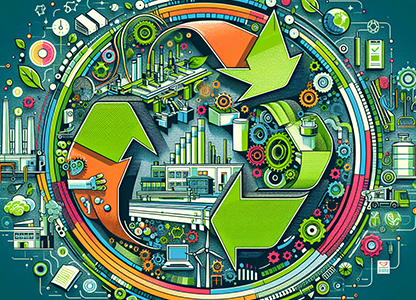Can eco materials boost design?

Exploring the role of sustainable materials in product design
In consumer-driven markets, sustainability is no longer a luxury—it’s a necessity. This trend is driven by increasing environmental awareness and consumer demand for eco-friendly products. For product designers and manufacturers, the integration of sustainable materials into product design is crucial, not just for meeting these demands but also for securing competitive advantage. This Insight explores the latest innovations in eco-friendly materials and provides actionable strategies for integrating sustainability into product development processes.
The rise of sustainable materials
The last decade has seen significant advancements in sustainable materials, ranging from biodegradable plastics to plant-based fabrics. These innovations are not only designed to minimize environmental impact but often enhance product performance. For example, companies like Nike incorporate recycled polyester in their apparel, reducing waste and energy consumption. LEGO, on the other hand, has committed to producing its iconic bricks from bio-based plastics derived from sugarcane. In this year's FAKUMA, the worlds second largest plastics trade fair after the K-Show, it is not even a hype anymore. It is common practice.
Why sustainability matters
Sustainability in product design bridges the gap between environmental impact and consumer expectations. Today's consumers are more informed and selective, preferring brands that prioritize sustainability. This shift presents an enormous opportunity for businesses to align their product strategies with sustainable practices:
- Consumer Trust: Sustainability fosters trust and loyalty among customers.
- Regulatory Compliance: Governments worldwide are enacting stricter regulations on materials and production processes.
- Market Differentiation: Eco-friendly products often stand out in the market, providing a unique selling proposition.
Actionable strategies for integrating sustainability
1. Evaluate material options
Start by assessing the materials you currently use. Identify sustainable alternatives that can meet your product specifications. Use databases like Positive Plastics or UL to explore eco-friendly materials and their applications.
2. Design for durability
Focus on the lifecycle of your product. Designing for longer life spans reduces the need for frequent replacements, thus minimizing waste. For example, Patagonia designs their outdoor gear to be highly durable and offers repair services to extend product life.
3. Optimize manufacturing processes
Streamlining your manufacturing processes can significantly reduce waste. Techniques like lean manufacturing not only improve efficiency but can also lessen environmental impact. For example, Toyota has been a pioneer in lean production, reducing resource consumption and waste. Did you know next to optimizing your energy usage, you can limit waste streams in your injection moulding process?
Case studies
Nike: revolutionizing apparel with recycled materials
Nike has been a leader in incorporating recycled materials into their products. Their Flyknit technology uses high-strength fibers made from recycled PET materials, significantly reducing waste and carbon footprint. Nike's Move to Zero initiative aims to achieve zero carbon and zero waste throughout its supply chain.
Adidas: reducing ocean plastic
Adidas' partnership with Parley for the Oceans has resulted in products made from upcycled plastic waste collected from beaches and coastal communities. The Adidas x Parley collection is a testament to how innovative materials can address environmental issues while appealing to eco-conscious consumers.
Tesla: sustainable sourcing in technology
Tesla's focus on sustainability extends beyond electric vehicles. The company is committed to responsibly sourcing raw materials like cobalt and lithium, essential for their batteries, while ensuring minimal environmental impact and ethical mining practices.
Conclusion
Sustainability is not a mere trend but a critical component of modern product design and manufacturing. By acting informed and driving innovations in sustainable materials and adopting actionable strategies, businesses can reduce their environmental footprint and gain a competitive edge. Brands like Nike, Adidas, and Tesla demonstrate that sustainability can drive success and trust in consumer markets.
Incorporating a sustainable culture into your product development processes today, and you will not only meet consumer demand but also pave the way for a more sustainable future.

Discover related Insights
Stay up to date with our latest articles.




